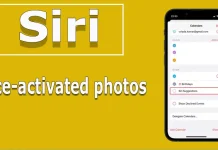Captions and subtitles have become almost ubiquitous now in the era of streaming and YouTube services. Now they are added not because companies are required by law, but because it is more convenient for the viewer.
However, this was not always the case and originally subtitles were regulated by law.
The first regulation was the Television Decoder Circuitry Act, passed in the US Congress on January 3, 1991. According to that act all analog TV sets had to have subtitle decoders. This act made subtitle support mandatory for all TVs sold in the US. However, that was only the beginning because the law only regulated the availability of decoders but had no rules on subtitles for TV programs.
The next step was the FCC decision which said that TV programs must be subtitled. However, there were exceptions, for example, for commercials of less than 5 minutes duration and for programs that were on the air from 2 to 6 am.
Back in 1990, the Americans with Disabilities Act (ADA) was passed, which required public facilities to provide audio visualizations for television.
Regulations have kept pace with changes in technology. For example, The Telecommunications Act of 1996 expanded on the Decoder Circuitry Act to digital television. Also, the 21st Century Communications and Video Accessibility Act (CVAA) expanded the DCA to all devices that can receive and play video content with sound. The act included virtually all devices and programs, including those transmitted over the Internet.






